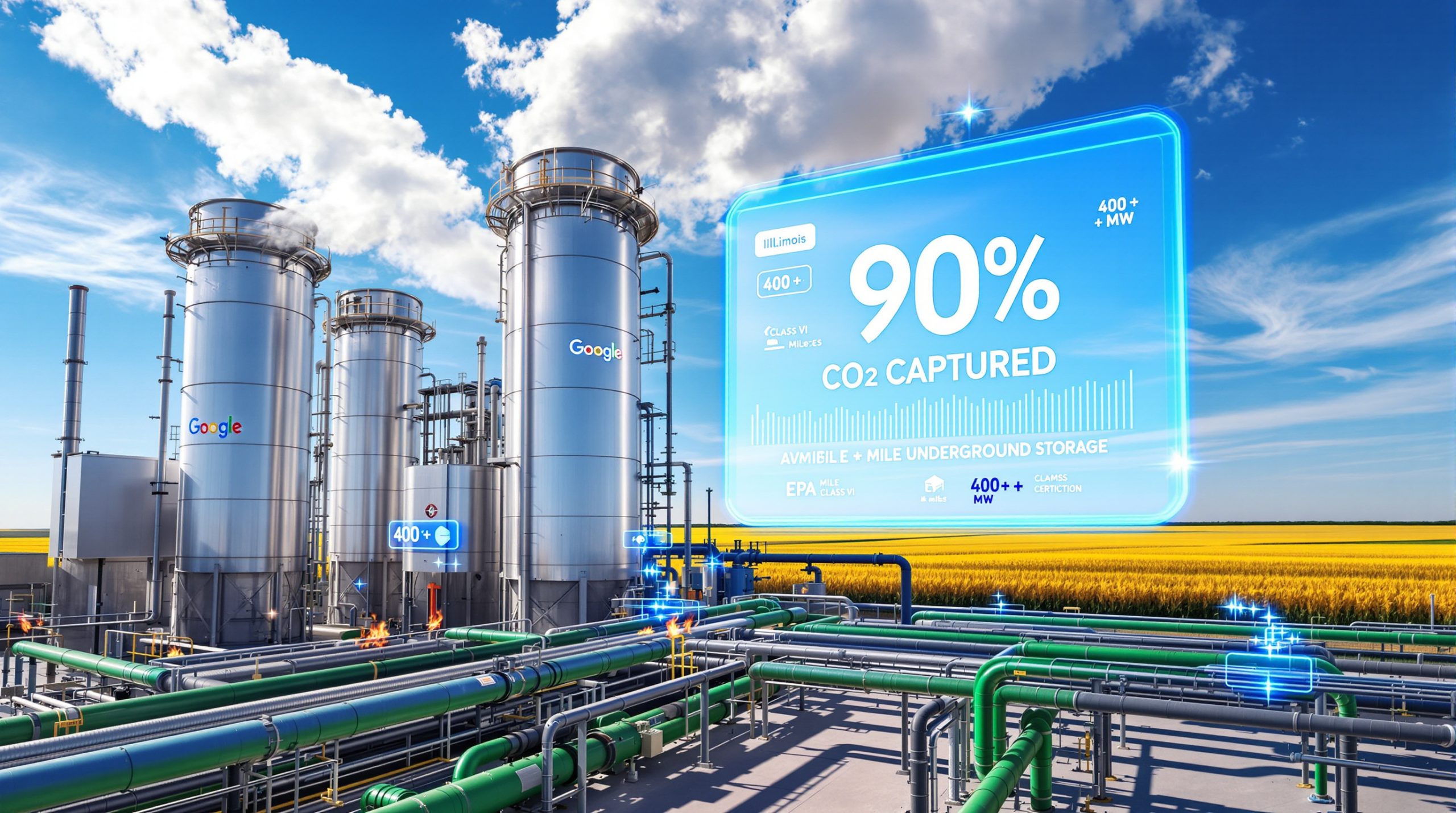What is Germanium and Why is it Important?
Germanium represents one of the most versatile yet underappreciated elements in modern technology. This silvery-gray metalloid, positioned between silicon and tin on the periodic table, possesses unique semiconductor properties that make it irreplaceable in numerous high-tech applications. Unlike more abundant elements, germanium combines exceptional electrical conductivity with remarkable optical characteristics, creating a material that bridges multiple technological domains.
Key Properties and Characteristics
Germanium distinguishes itself through several exceptional properties that drive its technological value:
- Semiconductor capabilities: Functions as an intrinsic semiconductor at room temperature with electron mobility approximately 3,900 cm²/Vs – significantly higher than silicon
- Infrared transmission: Exceptional transparency to infrared radiation in the 2-14 μm wavelength range, making it ideal for thermal imaging
- Optical properties: High refractive index (approximately 4.0) with minimal dispersion across a wide spectrum
- Thermal conductivity: Moderate thermal conductivity (60 W/m·K) balancing heat dissipation needs
- Chemical stability: Resistant to most acids and bases at room temperature, though vulnerable to oxidation at elevated temperatures
These properties combine to create a material that excels in applications where silicon and other semiconductors fall short.
Critical Applications Driving Demand
The versatility of germanium has established it as an essential component across diverse industries:
- Electronics: Plays a crucial role in high-speed integrated circuits, particularly in applications requiring faster processing capabilities than silicon can provide
- Infrared optics: Forms the foundation of night vision devices, thermal cameras, and infrared spectroscopy equipment due to its exceptional infrared transmission
- Fiber optics: Used as a dopant in fiber optic cables to reduce signal loss over long distances, enabling clearer telecommunications
- Solar technology: Essential component in high-efficiency multi-junction solar cells, particularly in space applications where power-to-weight ratio is critical
- Defense systems: Critical in guidance systems, reconnaissance equipment, and thermal imaging for military applications
- Satellite technology: Powers space-based solar arrays where efficiency per unit area is paramount
As noted by ReElement Technologies, "Germanium is predominantly used in the electronics industry as a semiconductor and is also integral to optical devices, especially those designed for infrared applications." Its role in enabling next-generation technologies continues to expand as new applications emerge.
How is ReElement Technologies Transforming Germanium Production?
ReElement Technologies, a subsidiary of American Resources Corporation, has developed pioneering methods for ultra-high-purity germanium production that address critical gaps in the domestic supply chain. Their breakthrough represents a significant advancement in materials processing technology with far-reaching implications for industries dependent on this critical minerals energy transition.
The Breakthrough Achievement
ReElement has successfully established commercial-scale protocols that deliver:
- Production capabilities for germanium exceeding 99.9% purity – the threshold required for most advanced applications
- Customizable purification processes capable of achieving specific purity requirements ranging from 99.9% to 99.999%
- Versatile processing systems that can handle both recycled materials and primary ore-based feedstocks
- Domestic production capacity within the United States, reducing dependence on foreign sources
According to Mark Jensen, CEO of ReElement Technologies, "The demand for germanium in both the commercial and defence industries is significant and growing. In recent months, we have received numerous recycled and ore-based feedstocks, which we have leveraged to develop commercial flow sheets aimed at partnering with feedstock providers and customers who need this refined material today."
Technical Innovation Behind the Process
The company's approach represents a significant departure from conventional germanium refining methods:
- Proprietary extraction methods: Developed specialized techniques for isolating germanium from complex material matrices, including electronic waste and byproducts from other mining operations
- Adaptive purification protocols: Created flexible processing parameters that can be adjusted based on feedstock quality and desired output specifications
- Dual-source processing: Engineered systems capable of processing both virgin and recycled material inputs without significant reconfiguration
- Scalable production framework: Designed modular systems that can be expanded to meet growing market demands
"I couldn't be more proud of our team's ability to establish these processing parameters using our industry-leading technology here in the US," notes Jensen. "Over the past few years, our focus has been on developing technical flow sheets for a wide range of critical material inputs while scaling our existing production."
This achievement positions ReElement as a significant player in the domestic germanium supply chain, offering a solution to longstanding challenges in securing reliable sources of this critical mineral.
Why is Ultra-High-Purity Germanium Critical for Modern Technology?
The level of purity in germanium directly impacts its performance in technological applications. Even trace impurities measured in parts per million can dramatically alter electrical and optical properties, rendering the material unsuitable for the most demanding applications. ReElement's capability to produce ultra-high-purity germanium addresses this fundamental requirement.
Purity Requirements for Advanced Applications
Different technological applications demand specific purity thresholds to function properly:
| Application | Required Purity | Critical Requirements |
|---|---|---|
| Standard Electronics | 99.9% | Basic semiconductor functionality, adequate electron mobility |
| Fiber Optic Systems | 99.99% | Minimal signal loss, reduced interference, optimal light transmission |
| Infrared Optics | 99.999% | Maximum infrared transmission, minimal scatter, high resolution imaging |
| Solar Cell Substrates | 99.999% | Optimal energy conversion efficiency, consistent performance over time |
| Defense Systems | 99.999%+ | Extreme reliability in varying conditions, precision performance |
These requirements illustrate why ReElement's ability to customize purity levels between 99.9% and 99.999% represents such a significant advancement. The company can tailor production to meet the specific needs of diverse applications, optimizing both performance and cost.
Performance Impact of Purity Levels
The relationship between germanium purity and device performance extends across multiple parameters:
- Signal integrity: Each 0.01% increase in purity can reduce signal noise by approximately 3-5% in sensitive electronic applications
- Optical clarity: Higher purity directly correlates with improved infrared transmission, with 99.999% pure germanium allowing over 95% transmission in the critical 2-14μm wavelength range
- Thermal efficiency: Purer germanium demonstrates more consistent thermal properties, with reduced hot spots and more predictable heat distribution
- Device reliability: Higher purity materials show significantly reduced failure rates under stress testing, with 99.999% pure germanium exhibiting approximately 40% longer mean time between failures
- Energy conversion: In solar applications, each 0.001% improvement in germanium purity can yield measurable gains in conversion efficiency
These performance advantages explain why manufacturers of cutting-edge technologies increasingly specify ultra-high-purity germanium, despite its higher cost compared to lower-grade alternatives. The performance benefits frequently outweigh the additional expense, particularly in applications where reliability and precision are paramount.
What Market Factors are Driving Germanium Demand?
The germanium market is experiencing dynamic growth driven by technological evolution across multiple sectors. As an enabling material for numerous advanced technologies, germanium demand reflects broader trends in digitalization, renewable energy adoption, and defense modernization.
Growing Commercial Applications
Several commercial sectors are increasing their reliance on germanium-based technologies:
- Telecommunications expansion: The ongoing rollout of advanced communication networks requires significant quantities of germanium-doped fiber optics to achieve necessary data transmission rates
- Renewable energy adoption: High-efficiency multi-junction solar cells using germanium substrates play a critical role in concentrated solar power systems and space-based solar applications
- Consumer electronics evolution: Advanced infrared sensors for smartphone cameras, facial recognition systems, and augmented reality devices increasingly incorporate germanium components
- Automotive technology: Modern vehicles utilize germanium in infrared sensors for autonomous driving systems, night vision enhancement, and cabin monitoring
- Medical imaging advancements: Next-generation diagnostic equipment leverages germanium's unique properties for improved resolution and sensitivity in specialized imaging applications
As Mark Jensen, CEO of ReElement Technologies notes, "The demand for germanium in both the commercial and defence industries is significant and growing." This assessment aligns with broader market trends indicating increased adoption of germanium-dependent technologies.
Strategic Defense Applications
The defense sector represents one of the most stable and significant markets for high-purity germanium:
- Night vision systems: Military-grade night vision and thermal imaging devices rely on germanium lenses and components to provide critical battlefield awareness
- Satellite communications: Space-based communication and surveillance systems utilize germanium in solar panels and specialized sensors
- Guidance systems: Precision targeting technologies incorporate germanium-based components for improved accuracy and reliability
- Reconnaissance equipment: Advanced surveillance platforms leverage germanium's infrared properties for enhanced detection capabilities
- Secure communications: Military-grade communication networks employ germanium components to achieve necessary security and reliability standards
The strategic importance of these applications ensures consistent demand for ultra-high-purity germanium, independent of commercial market fluctuations. This defense-related demand provides important market stability for producers like ReElement Technologies.
How Does Germanium Fit into Critical Mineral Supply Chains?
Germanium's status as a critical mineral reflects both its technological importance and the challenges associated with securing reliable supplies. Understanding these supply chain dynamics provides essential context for appreciating ReElement's contribution to domestic production capabilities.
Supply Chain Vulnerabilities
The germanium supply landscape presents several significant challenges:
- Geographic concentration: Historically, production has been dominated by China, which controls approximately 60% of global germanium production, creating potential supply vulnerabilities
- By-product recovery: Most germanium is obtained as a by-product of zinc processing or coal ash extraction rather than from dedicated mining operations
- Limited substitutability: For many critical applications, particularly in infrared optics, there are few viable alternatives to germanium that can provide comparable performance
- Processing complexity: The technical expertise required for high-purity production has traditionally been concentrated in a small number of facilities worldwide
- Market volatility: Price fluctuations of 20-30% annually are not uncommon due to supply constraints, export restrictions, and rapidly shifting demand patterns
These factors combine to create a precarious supply situation for industries dependent on reliable germanium access, particularly those with strategic importance like defense and telecommunications.
Strategic Importance for National Security
Securing domestic germanium production capabilities has become a priority for many nations:
- Critical mineral designation: Formally recognized as a strategically important material by the United States and other governments, making it eligible for special supply chain initiatives
- Supply chain resilience: Active efforts to develop domestic processing capabilities to reduce dependency on foreign sources
- Defense readiness: Military planners prioritize access to germanium for essential defense systems, driving support for domestic production
- Technological sovereignty: Nations increasingly view control of germanium supply chains as necessary for maintaining leadership in strategic technologies
- Economic security: Industries dependent on germanium-based technologies represent significant economic value, further incentivizing supply chain security
ReElement's development of domestic production capability directly addresses these strategic concerns, offering a path toward reduced dependence on foreign sources for this critical material.
What Makes ReElement's Approach Innovative?
ReElement Technologies has implemented several innovative approaches that differentiate their germanium production from conventional methods. These innovations address longstanding challenges in germanium processing while offering improved efficiency and flexibility.
Technological Differentiation
The company's refining platform introduces several meaningful advances:
- Versatile feedstock processing: Capability to work with diverse input materials from both primary and secondary sources, reducing dependence on any single supply channel
- Adaptive purification protocols: Customizable processes that can be optimized for specific purity targets, allowing for efficient production across the purity spectrum
- Environmentally optimized methods: Reduced waste generation and energy consumption compared to traditional approaches, improving sustainable mining transformation
- Modular scaling capability: Flexible production architecture that allows capacity expansion without complete system redesign
- Integration with existing supply chains: Designed to complement rather than replace current infrastructure, facilitating adoption without disruption
As Jensen explains, "Our innovative refining platform continues to demonstrate unmatched versatility and efficiency, enabling a truly independent critical mineral supply chain." This versatility represents a significant advance over more rigid conventional production systems.
Sustainability Advantages
ReElement's approach also addresses important environmental considerations:
- Circular economy integration: Ability to process recycled materials supports closed-loop resource models that reduce waste
- Resource efficiency: Optimized extraction processes maximize recovery rates from input materials, improving resource utilization
- Reduced environmental footprint: Streamlined processing methods minimize energy and chemical usage compared to traditional approaches
- Waste stream reduction: Improved processing efficiency decreases production waste that would otherwise require disposal
- Life-cycle considerations: Comprehensive approach to material sourcing and processing that considers environmental impacts throughout the value chain
These sustainability advantages align with growing market preferences for environmentally responsible material sourcing, potentially creating additional value beyond the technical specifications of the germanium itself.
How Does Recycled Germanium Compare to Virgin Material?
ReElement's ability to process both recycled and ore-based feedstocks represents an important advancement in sustainable resource management. This dual-source capability offers both environmental and supply chain advantages while addressing technical challenges inherent in recycled material processing.
Recycling Challenges and Solutions
Recovering germanium from end-of-life products presents unique challenges:
- Complex material matrices: Germanium in electronic waste is typically embedded within multi-component systems that require sophisticated separation techniques
- Concentration variations: Recycled sources contain varying germanium content – from less than 1% in some electronic waste to over 30% in specialized optical components
- Contamination concerns: Presence of other elements and compounds that can interfere with purification processes and must be effectively removed
- Process adaptability: Need for flexible processing methods capable of accommodating the inherent variability of recycled inputs
- Quality assurance: Maintaining consistent output quality despite variable inputs requires advanced process monitoring and control systems
ReElement's ability to overcome these challenges stems from their innovative processing protocols that can adapt to varying input characteristics while still achieving target purity levels.
Economic and Environmental Benefits
The advantages of incorporating recycled germanium include:
- Resource conservation: Reducing primary extraction requirements by recapturing germanium from existing products
- Energy savings: Recycling typically requires 45-60% less energy than primary production, significantly reducing carbon footprint
- Waste reduction: Diverting materials from landfills or incineration, where valuable germanium would otherwise be lost
- Supply diversification: Creating additional material sources beyond mining, reducing vulnerability to supply disruptions
- Price stabilization: Potentially reducing market volatility through increased supply diversity and reduced dependence on primary production
"We have received numerous recycled and ore-based feedstocks, which we have leveraged to develop commercial flow sheets," notes Jensen, highlighting the practical implementation of this dual-source approach. This capability positions ReElement to play a significant role in developing more sustainable germanium supply chains.
What is the Future Outlook for Germanium Production?
The germanium market stands at an inflection point, with growing demand across multiple sectors coinciding with efforts to diversify and secure supply chains. This creates both opportunities and challenges for producers like ReElement Technologies.
Market Growth Projections
Several factors indicate expanding germanium demand:
- 5G infrastructure deployment: The continued rollout of advanced telecommunications networks requires substantial quantities of germanium-doped fiber optics
- Satellite constellation development: Commercial space ventures are deploying unprecedented numbers of satellites, each requiring high-efficiency solar cells often based on germanium substrates
- Advanced solar technology adoption: Terrestrial concentrated photovoltaic systems utilizing germanium-based multi-junction cells are gaining traction in utility-scale installations
- Defense modernization programs: Ongoing military technology upgrades prioritize advanced sensing and imaging capabilities that rely on germanium components
- Emerging applications: New uses in quantum computing, specialized medical devices, and other cutting-edge fields continue to emerge, creating additional demand streams
These growth vectors suggest sustained demand increase across diverse sectors, reducing market vulnerability to downturns in any single application area.
Production Capacity Development
To meet growing demand, production capabilities are evolving:
- Facility scaling: Expansion of existing production facilities through capacity additions and process optimization
- Technology transfer: Implementation of advanced refining methods in new locations to diversify geographic production
- Partnership models: Collaborative approaches between feedstock providers, processors, and end-users to develop integrated production capacity
- Supply chain integration: Vertical integration strategies to secure material flows from source to application
- Innovation acceleration: Continued research to improve production efficiency and reduce costs
As Jensen notes, "Over the next year, we will be focused on scaling production not only at our Marion facility but also at partner facilities worldwide through our collaborative, partnership-based model." This approach reflects the broader industry trend toward more flexible, data-driven mining operations and networks.
What Does ReElement's Achievement Mean for the Industry?
ReElement Technologies' development of commercial protocols for ultra-high-purity germanium production represents a significant milestone with broad implications for the mining industry evolution and dependent industries.
Industry Impact
The breakthrough offers several benefits to the broader industry:
- Supply chain resilience: Enhancing domestic production capabilities reduces vulnerability to disruptions affecting international suppliers
- Quality advancement: Raising standards for commercially available materials enables development of improved end products
- Technology enablement: Supporting development of next-generation applications that require reliable access to high-purity germanium
- Market competition: Introducing new production capacity and approaches may improve pricing and availability for end-users
- Innovation catalyst: Demonstrating viability of alternative production methods encourages further technological advancement
These impacts extend beyon
Ready to Get Alerts on the Next Major Mineral Discovery?
Discover how proprietary Discovery IQ technology can alert you to significant ASX mineral discoveries in real-time, helping you identify actionable opportunities ahead of the broader market. Explore potential returns from historic discoveries on Discovery Alert's dedicated discoveries page and position yourself for success with a 30-day free trial.




